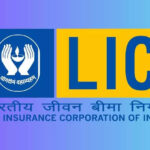Clients often ask me for advice on which marketing and sales data providers that they should consider. Over the past couple of years, those questions have increasingly focused on trusted sources of intent or behavioral data. Clients often have a shortlist in mind based on prior experience, industry references, or brand recognition. Surprisingly often, the providers that they are considering operate under different business models. Once they become aware of the differences, the business model becomes a key factor in their choice.
Choosing The Appropriate Business Model For Your Needs Can Help Narrow Your Shortlist
In The Forrester Wave™: B2B Intent Data Providers, Q2 2023, I evaluated 14 of the largest producers of intent data signals head to head. One of the key takeaways was the significance of the data provider’s business model in vendor selection. The 14 providers evaluated were classified into four business-model categories based primarily on how they price their intent signals:
- Traditional data providers. Traditional data providers focus on capturing third-party signals as a standalone product, pricing their offering on the volume of data consumed.
- ABM platform providers. Account-based marketing (ABM) platforms produce third-party signals as a differentiator for their built-in analytics and activation capabilities, including data access as part of the software platform subscription.
- Campaign execution firms. Campaign execution firms generate a mix of third- and second-party signals in support of marketing services, rolling the cost of the data into related activation fees or pricing on a cost-per-lead basis.
- Walled gardens. Finally, walled gardens collect second-party signals for specific industries directly from user activity on their owned properties, such as review sites and user communities, while pricing similarly to traditional data providers.
A number of the major providers offer multiple pricing structures that allow them to operate under more than one model. Traditional data providers are usually best for companies with existing analytics resources that are looking for an intent signal feed to incorporate into their own processes and infrastructure. ABM platform providers are best for companies that have some internal resources available but are looking for analytics support and orchestration tools that they can use to better execute their strategy. Campaign execution firms appeal most to companies that are looking for full-service demand generation in a do-it-for-you model. Walled gardens are highly sought after by companies selling into the specific industries they cover, due to the exclusive nature of their signals and the relatively late-stage buying behavior captured.
Most Companies Will End Up Buying From More Than One
Once your organization has established a relationship with a primary intent data provider, it is common to purchase data from additional providers as resources allow. Companies looking to supplement their primary data source need to be sure that the new intent signals will represent a meaningful addition to what they are already receiving. This can be done by looking at vendors with different business models or collection methodologies, but it’s always safest to test a sample dataset to confirm that the provider’s data is meaningfully differentiated from what you already have. I would suggest looking for providers with intent signals that are at least 30–40% unique from your existing source(s), though organizations with large resources to invest commonly add new sources with smaller, incremental gains.
Forrester’s Intent Data Research Can Help
My colleague Malachi Threadgill and I have spent much of the last year producing a series of reports for Forrester Decisions for Revenue Operations and Forrester Decisions for Demand & ABM clients designed to help with these issues, beginning with An Introduction To B2B Intent Data. For nonclients looking for highlights from that series, you can check out my previous blog, The 10 Biggest Intent Data Mistakes For B2B Marketing And Sales.








